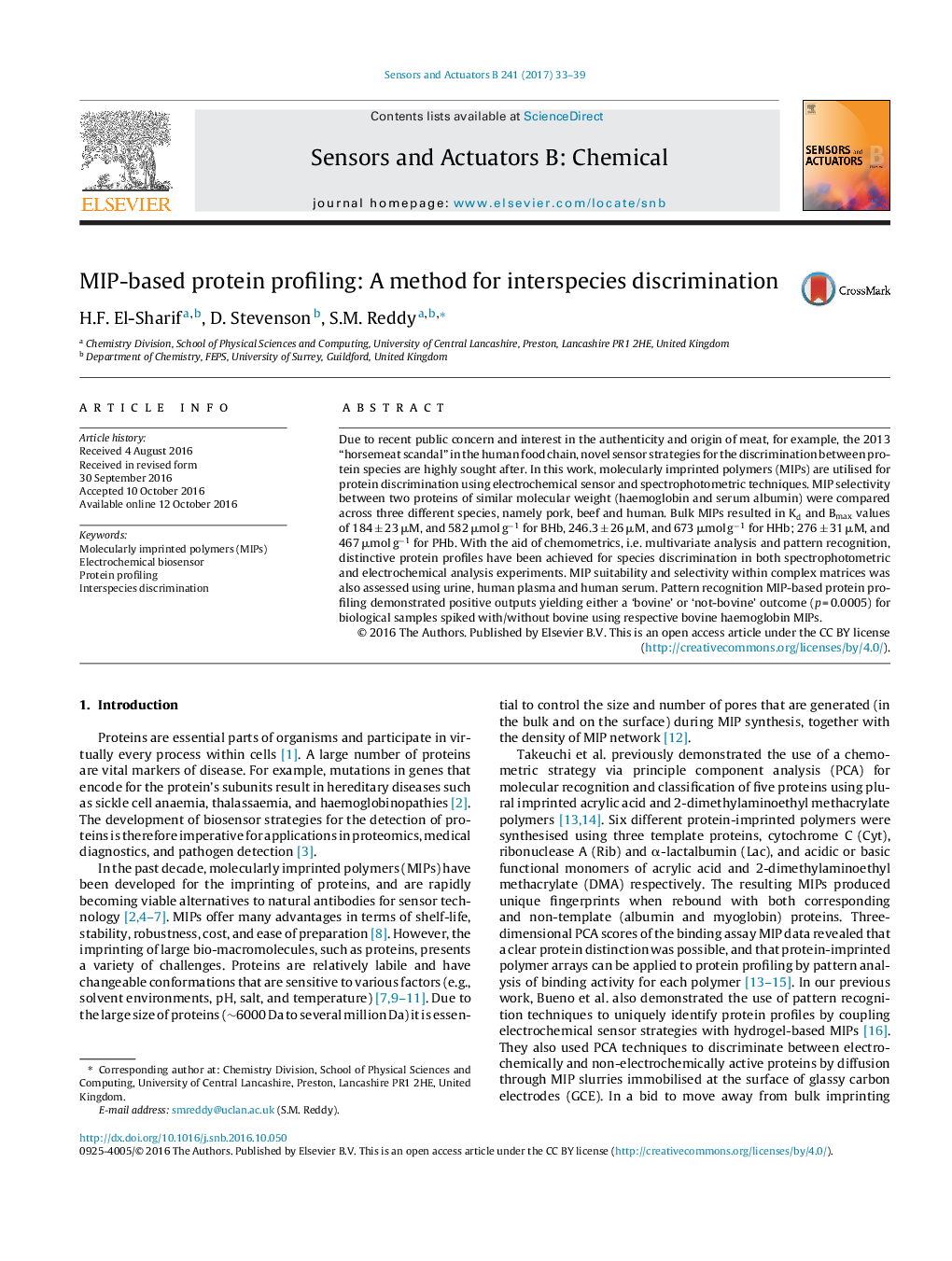| Article ID | Journal | Published Year | Pages | File Type |
|---|---|---|---|---|
| 5010062 | Sensors and Actuators B: Chemical | 2017 | 7 Pages |
â¢Electrochemically induced redox polymerization of acrylamide.â¢MIP-based approach for potential rapid in-field electrochemical protein testing.â¢New sensor strategies for the discrimination between protein species.â¢Discrimination of beef, human and pork proteins using multivariate analysis.
Due to recent public concern and interest in the authenticity and origin of meat, for example, the 2013 “horsemeat scandal” in the human food chain, novel sensor strategies for the discrimination between protein species are highly sought after. In this work, molecularly imprinted polymers (MIPs) are utilised for protein discrimination using electrochemical sensor and spectrophotometric techniques. MIP selectivity between two proteins of similar molecular weight (haemoglobin and serum albumin) were compared across three different species, namely pork, beef and human. Bulk MIPs resulted in Kd and Bmax values of 184 ± 23 μM, and 582 μmol gâ1 for BHb, 246.3 ± 26 μM, and 673 μmol gâ1 for HHb; 276 ± 31 μM, and 467 μmol gâ1 for PHb. With the aid of chemometrics, i.e. multivariate analysis and pattern recognition, distinctive protein profiles have been achieved for species discrimination in both spectrophotometric and electrochemical analysis experiments. MIP suitability and selectivity within complex matrices was also assessed using urine, human plasma and human serum. Pattern recognition MIP-based protein profiling demonstrated positive outputs yielding either a 'bovine' or 'not-bovine' outcome (p = 0.0005) for biological samples spiked with/without bovine using respective bovine haemoglobin MIPs.
Graphical abstractDownload high-res image (109KB)Download full-size image
